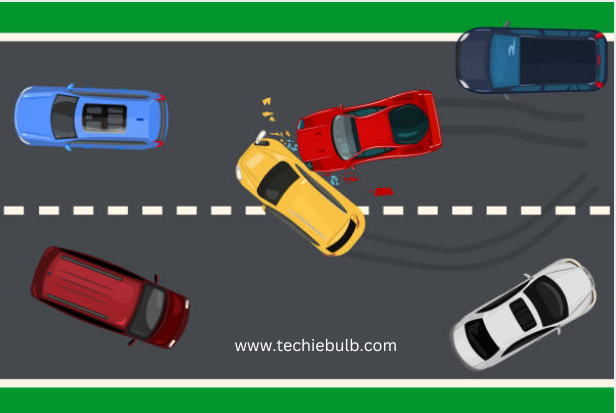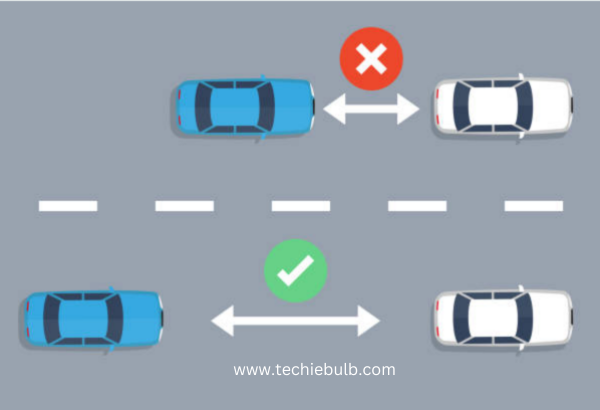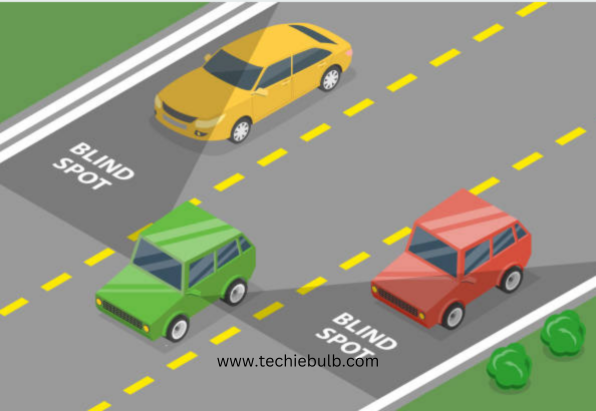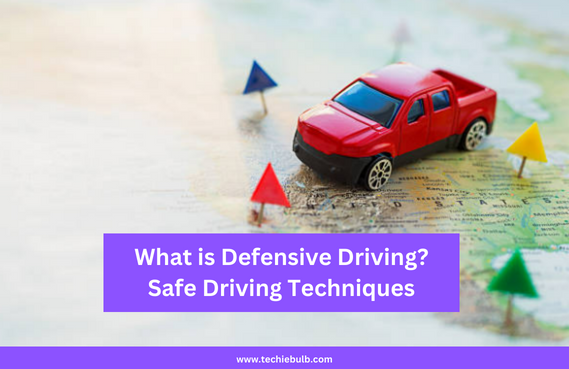Defensive driving involves a set of skills that aim to reduce the risk of accidents and encourage safe driving habits in the driving culture. It entails being aware of potential traffic risks and taking preventive efforts to avoid them.
More than a set of skills, it’s a mindset—a commitment to safeguarding oneself and others on the open road. In this introduction to defensive driving, we delve into the principles that transform ordinary drivers into vigilant road warriors.
Imagine a journey where every turn, merge, and stop is not merely a sequence of events but a strategic maneuver to anticipate and mitigate potential risks.
Defensive driving goes beyond the basic rules of the road, emphasizing awareness, preparation, and a keen understanding of the ever-changing dynamics on the asphalt canvas.
Through this approach, drivers not only protect themselves from unforeseen hazards but actively contribute to the collective safety of the driving community.
Join us as we explore the tenets of defensive driving, from maintaining a safe following distance to mastering the art of anticipating the actions of fellow road users.
Together, let’s embark on a journey towards safer, more responsible driving, where the road becomes a shared space governed by a collective commitment to defensive driving principles.
Why do we need defensive driving?
Defensive driving is crucial for several reasons, primarily centered around enhancing overall road safety and reducing the risk of accidents. Here are key reasons why defensive driving is needed:
- Accident Prevention: Defensive driving aims to prevent accidents by promoting a proactive approach to potential hazards. By staying alert and anticipating dangers, drivers can take evasive actions to avoid collisions and ensure the safety of themselves and others on the road.
- Reducing Traffic Fatalities and Injuries: Defensive driving plays a significant role in minimizing the severity of accidents. The skills and practices associated with defensive driving contribute to reducing the number of traffic-related fatalities and injuries, making roads safer for everyone.
- Mitigating the Impact of Human Error: Humans are prone to errors, and defensive driving recognizes this inherent vulnerability. By being vigilant, maintaining safe following distances, and adapting to changing road conditions, drivers can compensate for potential mistakes and reduce the likelihood of accidents caused by human error.
- Promoting Responsible Driving Behavior: Defensive driving emphasizes responsible and considerate behavior on the road. Following traffic rules, respecting other drivers, and avoiding aggressive actions create a safer and more harmonious driving environment.
- Enhancing Driver Awareness: Defensive driving cultivates a heightened sense of awareness among drivers. This includes being mindful of surroundings, scanning for potential hazards, and understanding the consequences of one’s actions on the road. Increased awareness contributes to improved decision-making behind the wheel.
- Protecting Pedestrians and Cyclists: Defensive driving is not only about the safety of the driver but also extends to protecting vulnerable road users like pedestrians and cyclists. Being alert and cautious reduces the risk of accidents involving these individuals.
- Adapting to Varied Road Conditions: Defensive driving recognizes the dynamic nature of road conditions, including weather changes, construction zones, and traffic fluctuations. The ability to adapt to these conditions ensures that drivers can navigate safely through diverse environments.
- Insurance Premium Reduction: Many insurance providers offer discounts to drivers who complete defensive driving courses. By demonstrating a commitment to safe driving practices, individuals can potentially lower their insurance premiums, providing a financial incentive for adopting defensive driving habits.
- Legal Compliance: Defensive driving aligns with legal requirements and traffic regulations. Adhering to these rules not only prevents legal consequences but also contributes to the overall order and safety of the road.
- Creating a Positive Driving Culture: When more drivers practice defensive driving, it fosters a positive driving culture. This, in turn, influences the behavior of other motorists, creating a ripple effect that contributes to a safer and more cooperative road environment.
What are the main Defensive Driving Tips?
“Defensive driving tips are essential for several compelling reasons, all of which contribute to creating a safer and more secure driving environment for everyone on the road. The below-mentioned tips will ensure all the parameters of Defensive Driving.
1. Stay Alert:

Being alert while driving is fundamental to defensive driving. Distractions like texting, talking on the phone, or even daydreaming can significantly impair your ability to react to potential hazards. According to research, distracted driving is one of the major causes of accidents. Therefore, it’s crucial to stay focused on the road and avoid any activities that divert your attention.
In addition to avoiding distractions, being alert also involves regularly checking your mirrors, scanning the road ahead, and staying aware of your surroundings. Keeping a 360-degree awareness of what’s happening on the road allows you to anticipate and respond to potential dangers effectively.
2. Anticipate Potential Hazards:

Developing the skill to anticipate potential hazards is a hallmark of defensive driving. It goes beyond simply reacting to what is happening at the moment. By scanning the road ahead and being aware of your environment, you can identify potential dangers before they become immediate threats.
Hazards can come in various forms, such as aggressive drivers, unpredictable pedestrians, road construction, adverse weather conditions, or even animals on the road. Anticipating these potential hazards allows you to plan and execute preventive measures to mitigate risks.
3. Keep a Safe Following Distance:

Maintaining a safe following distance is one of the critical aspect of defensive driving. The space cushion between your vehicle and the one in front of you provides you with the time and distance needed to react to sudden stops or emergencies. The 3-second rule is a commonly recommended guideline: keep at least a three-second gap between your vehicle and the one in front of you. In adverse conditions like rain or snow, it’s advisable to increase this distance.
By adhering to this rule, you not only enhance your safety but also contribute to the overall flow of traffic. It minimizes the chances of rear-end collisions and allows for smoother traffic movement.
4. Obey Traffic Rules:

Traffic rules and regulations are in place to ensure the safe and orderly flow of traffic. Following speed limits, stopping at stop signs, obeying traffic signals, and adhering to other rules contribute to a safer driving environment. Disregarding these rules not only puts you at risk of accidents but also endangers other road users.
Understanding and respecting traffic rules is an essential part of defensive driving. It establishes a predictable and organized traffic flow, reducing the likelihood of misunderstandings and collisions.
5. Use Mirrors Effectively:

Mirrors are crucial tools for maintaining situational awareness on the road. Regularly checking your rearview and side mirrors helps you stay informed about the positions of vehicles around you. Blind spots, areas not visible in your mirrors, can be potential sources of danger.
In addition to using mirrors, physically turning your head to check blind spots before changing lanes or making turns is a good practice. This extra precaution ensures that you have a complete picture of your surroundings, reducing the risk of collisions.
6. Adapt to Road Conditions:

Adapting your driving to current road conditions is a key component of defensive driving. Weather changes, road construction, and other factors can significantly impact driving conditions. Adjusting your speed, maintaining a safe following distance, and using caution in adverse weather conditions are essential.
For example, in rainy or snowy conditions, roads can become slippery, requiring a reduction in speed and increased braking distance. Understanding how different road conditions affect your vehicle’s handling and adjusting your driving accordingly enhances safety.
7. Avoid Aggressive Driving:

Aggressive driving behaviors, such as tailgating, excessive speeding, and road rage, not only increase the risk of accidents but also contribute to a hostile driving environment. Defensive driving emphasizes maintaining a calm and patient demeanor behind the wheel.
Managing stress and frustration while driving is essential for making rational decisions and avoiding aggressive behaviors. If you encounter aggressive drivers, it’s best to distance yourself from them rather than escalating the situation.
8. Use Turn Signals:

Communication on the road is vital for preventing misunderstandings and reducing the risk of accidents. Using turn signals to indicate your intentions allows other drivers to anticipate your movements. Whether changing lanes, merging, or making turns, signaling provides valuable information to those around you.
Consistent use of turn signals fosters a more predictable driving environment, making it easier for others to react appropriately. It’s a simple yet effective way to enhance overall road safety.
9. Be Mindful of Blind Spots:

Blind spots, areas not visible in mirrors, can pose a significant risk when changing lanes or making turns. Being mindful of your vehicle’s blind spots and regularly checking them before maneuvering helps eliminate potential surprises.
In addition to being aware of your blind spots, it’s essential to recognize that other drivers may have blind spots as well. Positioning your vehicle where you can be seen by others and avoiding lingering in their blind spots reduces the risk of collisions.
10. Plan Your Route:

Planning your route before setting out on a journey contributes to a smoother and safer driving experience. Familiarizing yourself with the roads, potential construction zones, and known hazards allows you to make informed decisions while driving.
In today’s digital age, navigation apps provide real-time information about traffic, accidents, and road closures. Utilizing these tools can help you avoid unexpected delays and make alternative route choices, enhancing your overall driving efficiency and safety.
By thoroughly understanding and implementing these principles, you can significantly enhance your defensive driving skills. Remember that defensive driving is not a one-time effort but a continuous commitment to safe and responsible behavior on the road. Regularly practicing these habits will contribute to your safety and the safety of others, creating a more secure driving environment for everyone.

